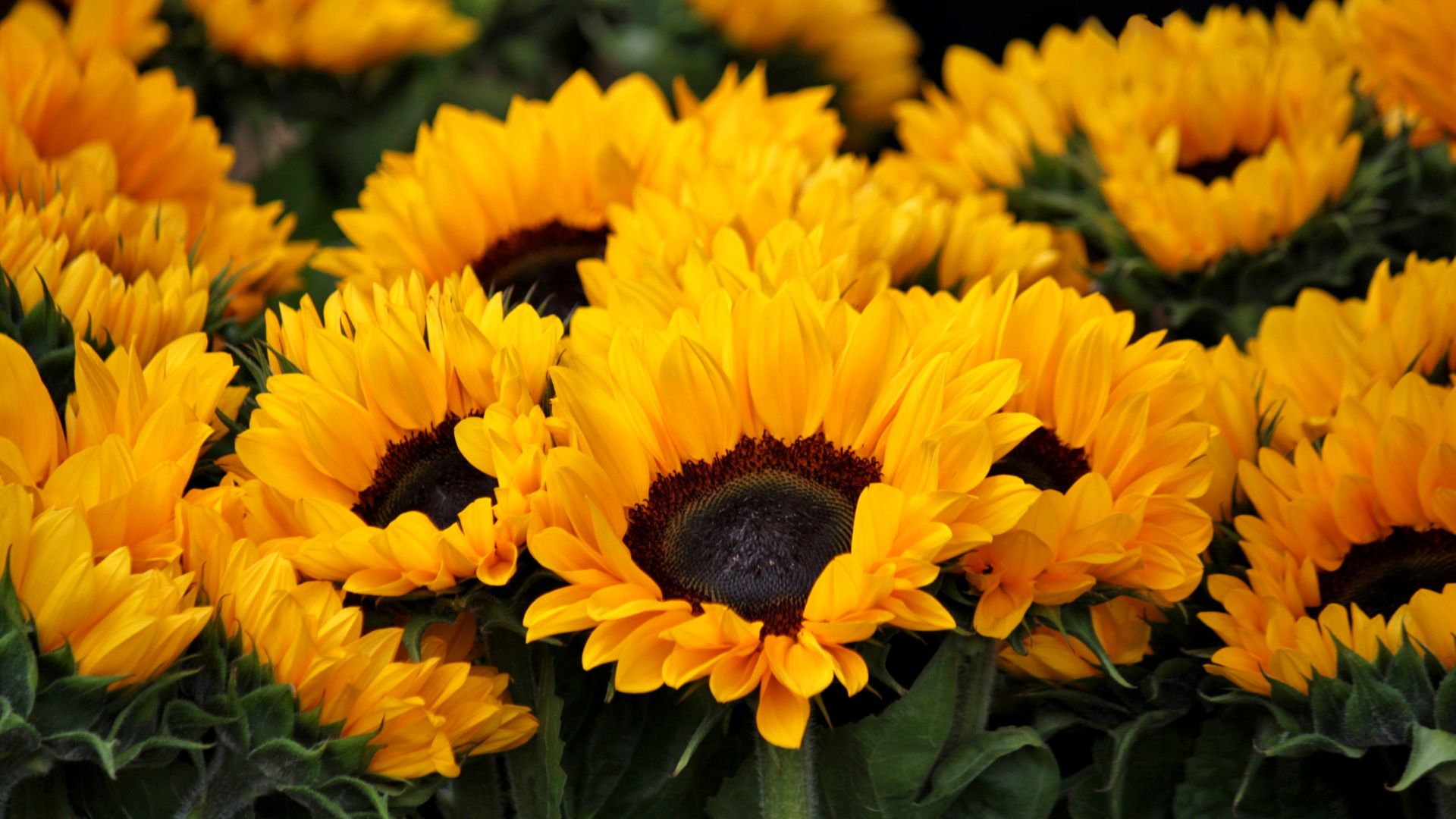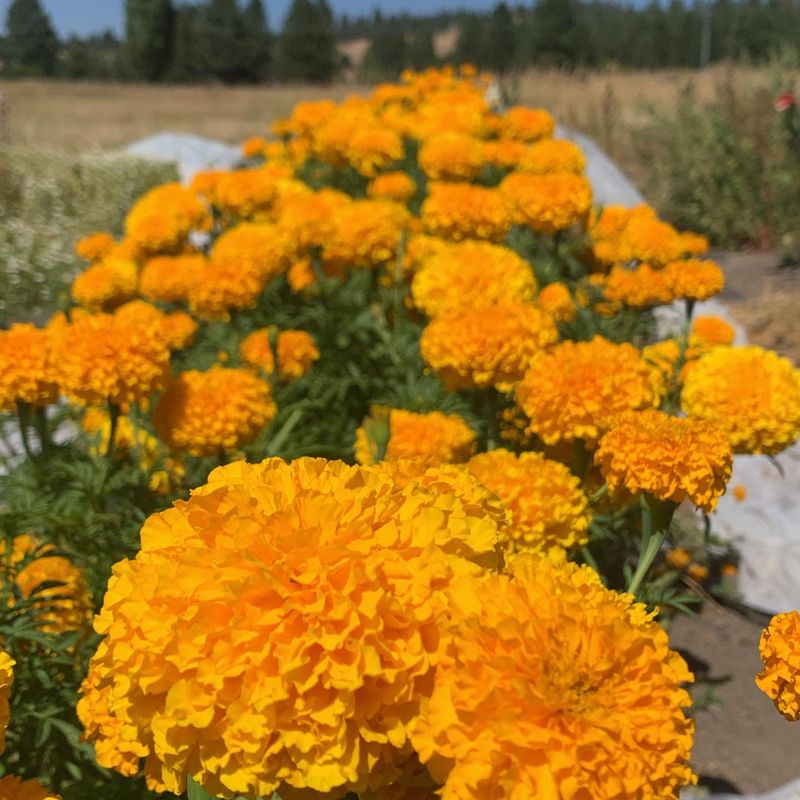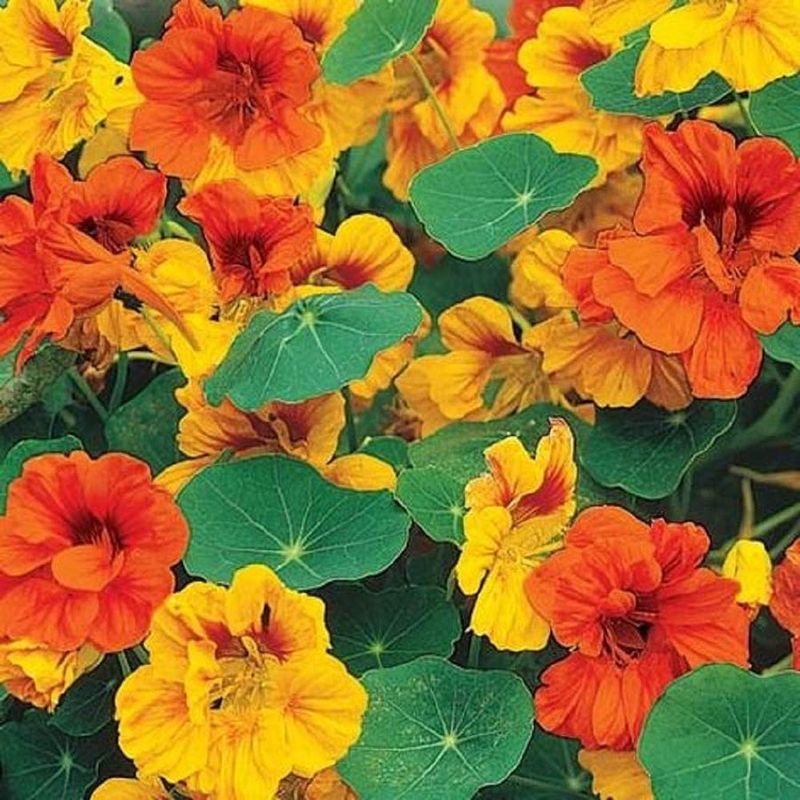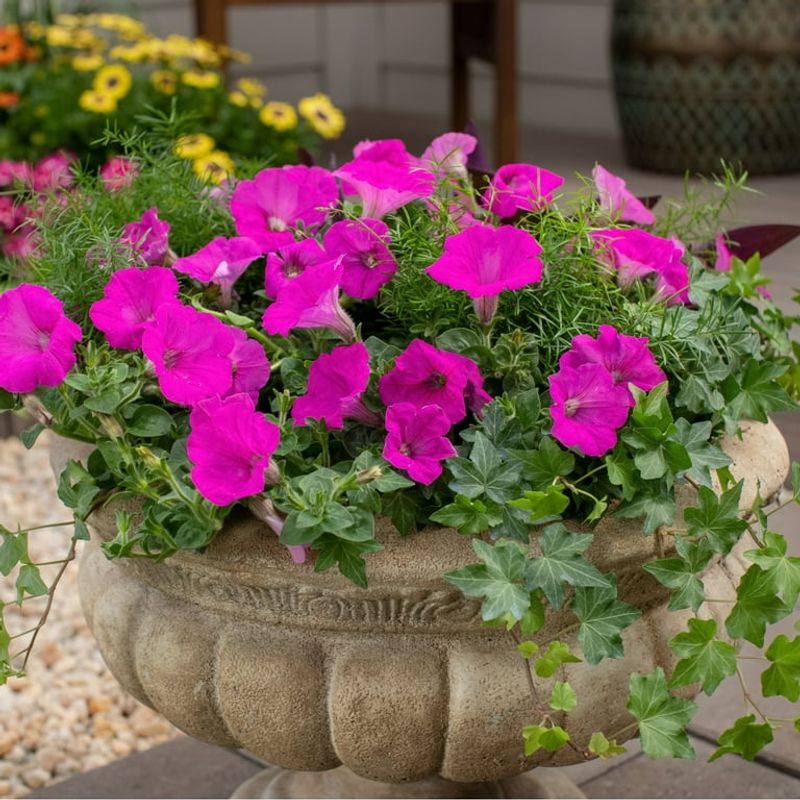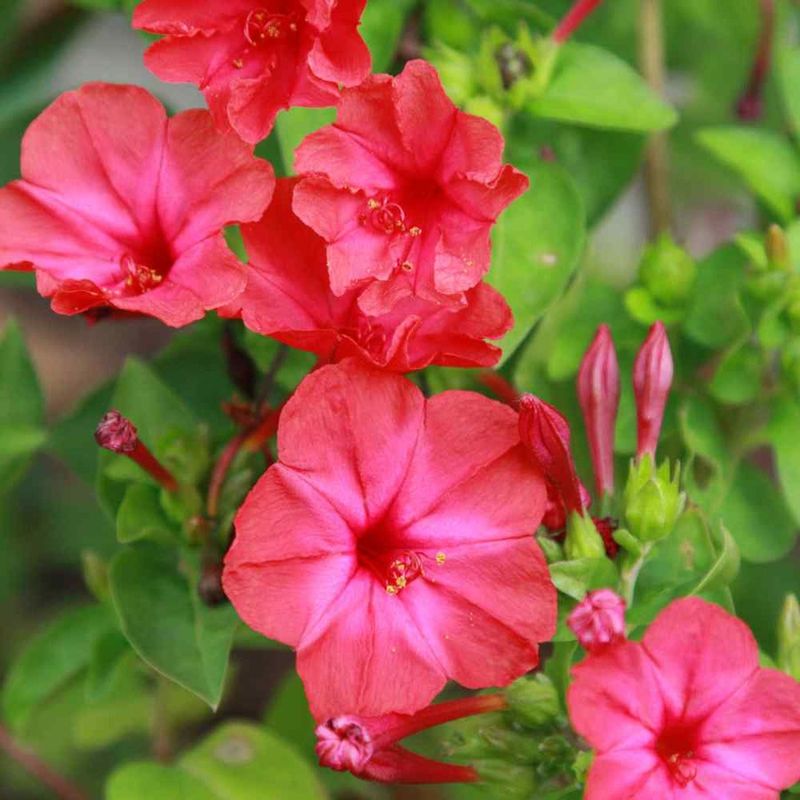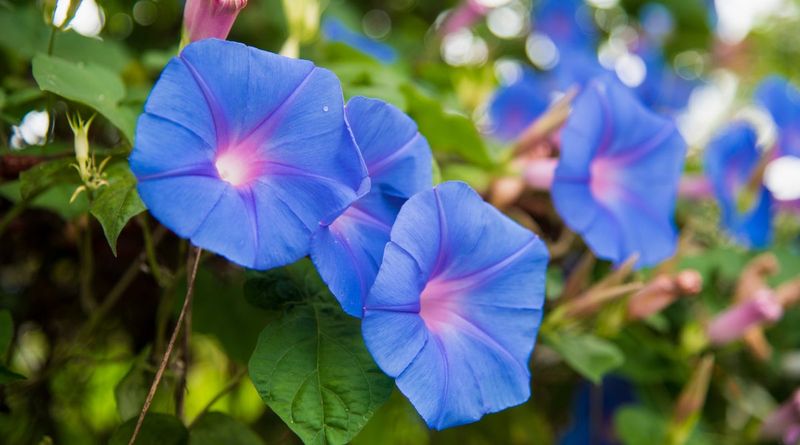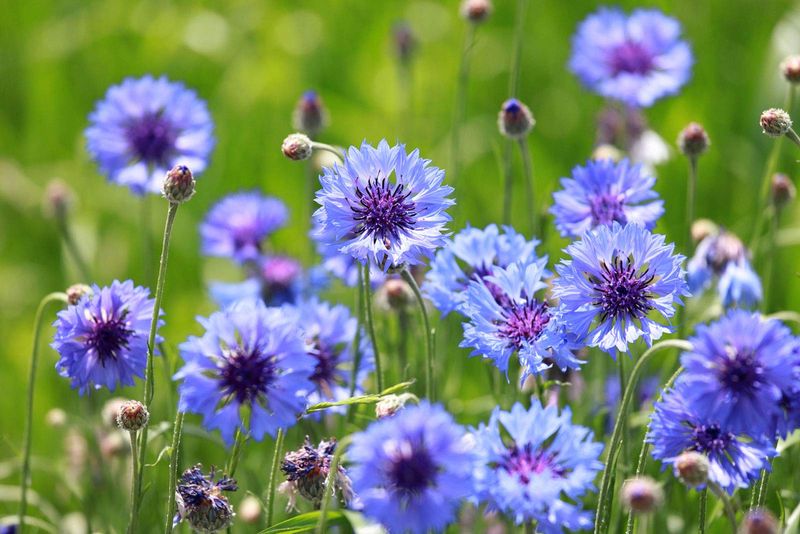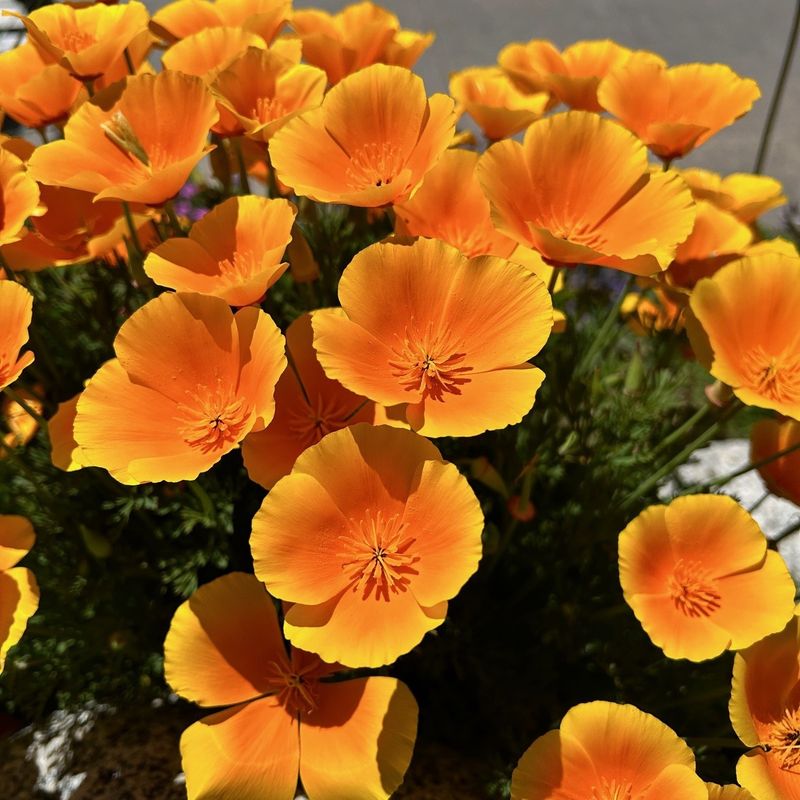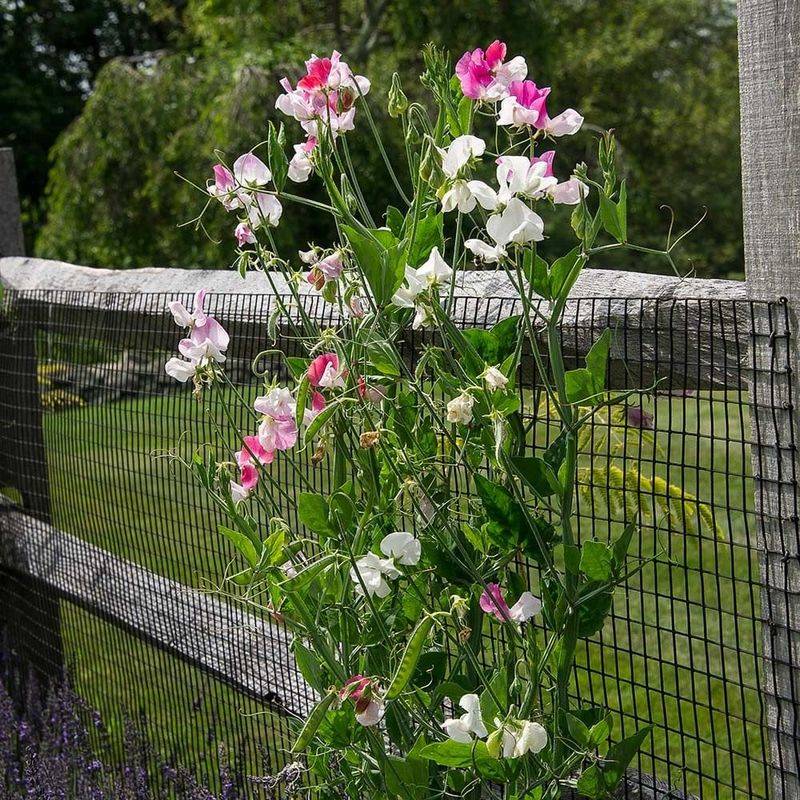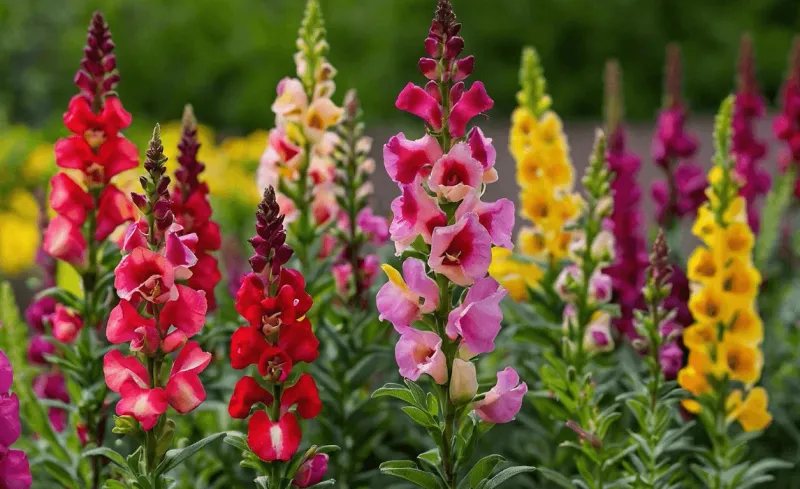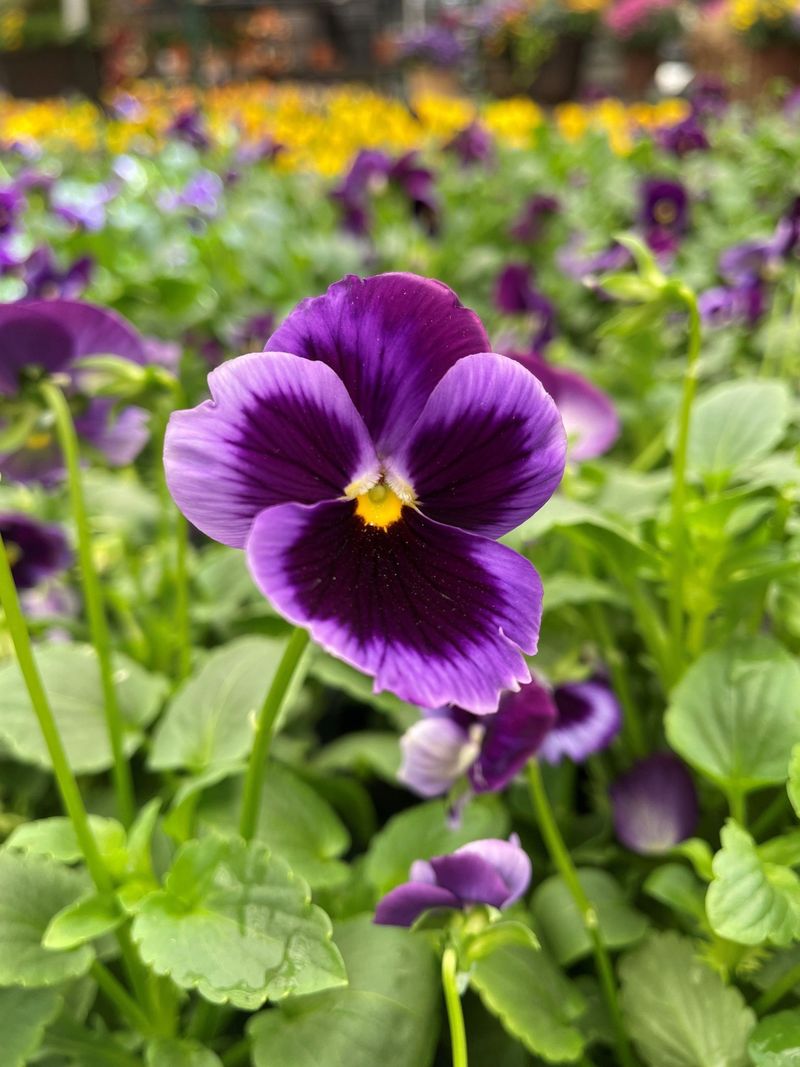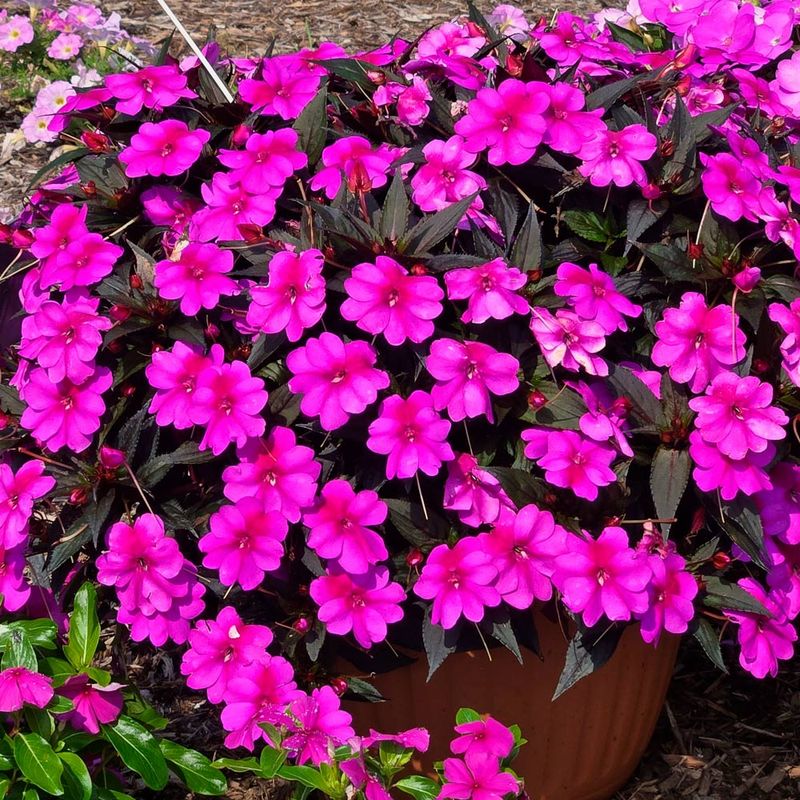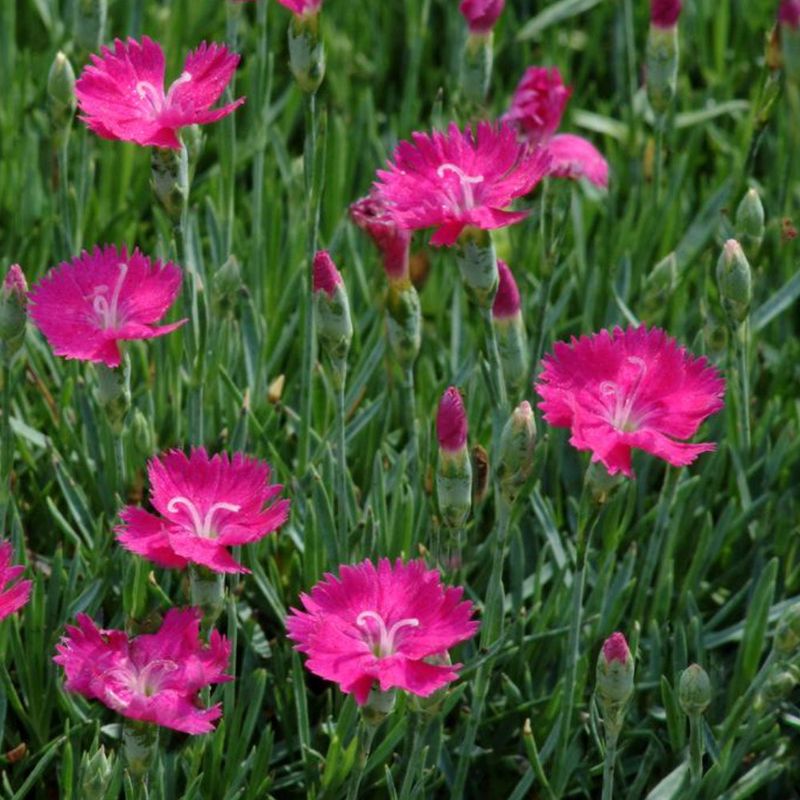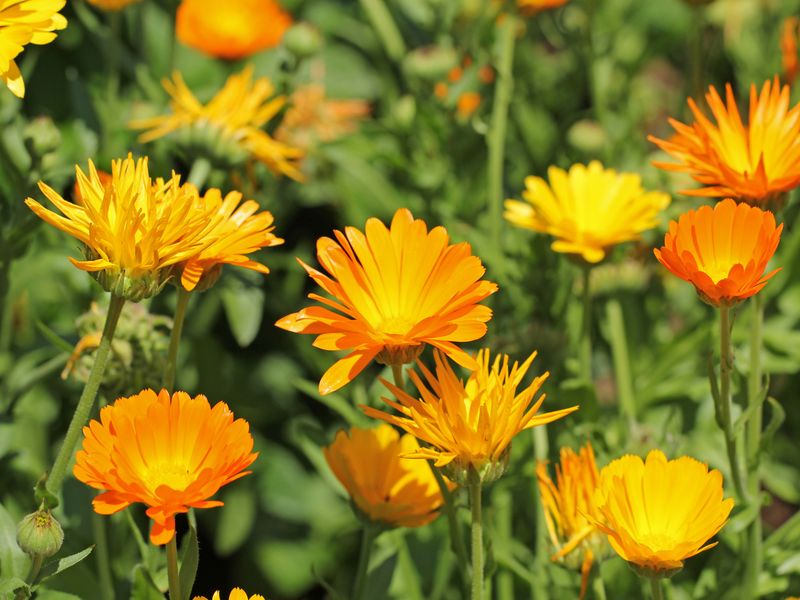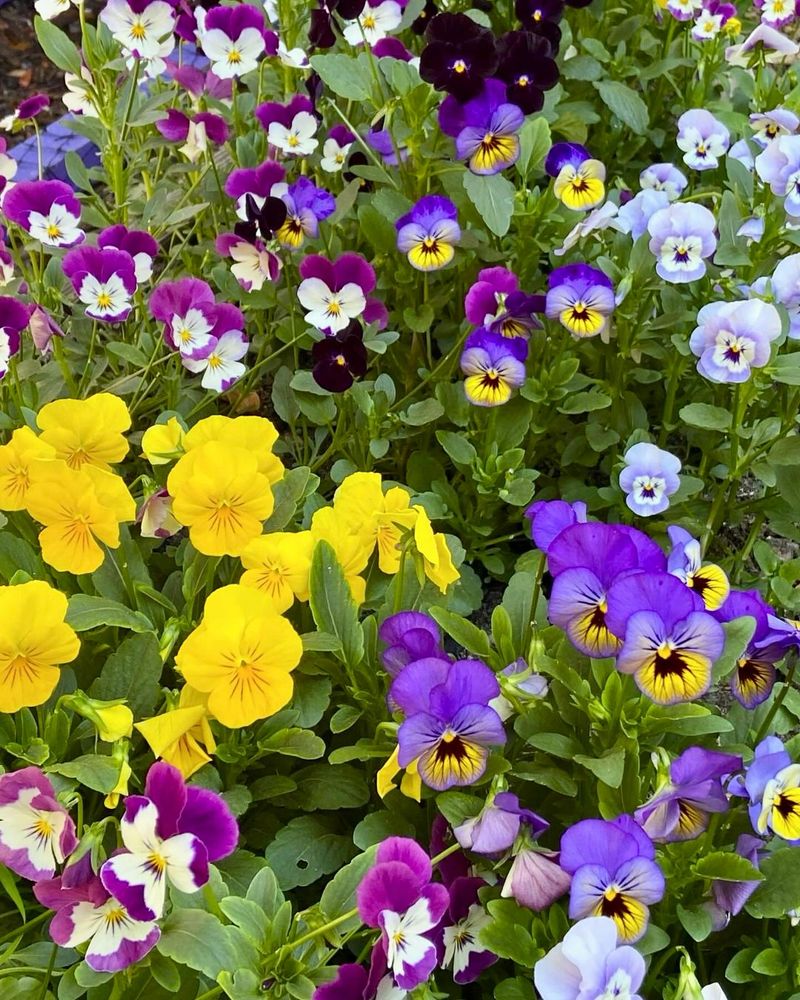Want to add some color to your yard without spending a small fortune? I’ve been there—scrolling through garden ideas, only to realize just how pricey plants and supplies can get. But the truth is, you really don’t need a big budget to make a big impact.
With just a few bucks and a little effort, you can create a space that’s bursting with color and charm. Some of my favorite garden corners started with clearance rack plants and a hand-me-down trowel. It’s amazing what a few blooms and a bit of mulch can do.
Whether you’re working with a balcony or a backyard, there are plenty of budget-friendly ways to build a garden you’ll love—and so will the bees and butterflies. Let’s dig into some simple, colorful ideas to get you started.
1. Marigolds
My garden wasn’t complete until I added these golden beauties. For less than $2 a pack, marigold seeds grow quickly into pest-repelling powerhouses that thrive in almost any soil condition.
Their sunny blooms last from spring until the first frost, making them one of the best values in gardening. I’ve found they work wonderfully as border plants or mixed into vegetable gardens to keep harmful insects away.
Even first-time gardeners find success with marigolds. Their drought tolerance means less watering, and deadheading spent blooms encourages continuous flowering all season long.
2. Zinnias
Last summer, I scattered a $3 packet of zinnia seeds along my fence line and ended up with months of spectacular color. These undemanding annuals produce dozens of daisy-like blooms in every shade imaginable.
What makes zinnias particularly special is how they attract butterflies and hummingbirds while providing endless cutting flowers for indoor arrangements. The more you cut, the more they bloom – it’s like getting two gardens for the price of one.
Unlike fussier flowers, zinnias handle hot, dry conditions with ease. They’re perfect for filling empty spaces quickly and add instant charm with their playful, multi-colored blooms.
3. Sunflowers
A single $1.50 packet transformed the bare fence behind my shed into a stunning focal point. Sunflowers create dramatic height and cheerful color while requiring minimal care – just full sun and occasional watering.
Beyond their obvious beauty, these gentle giants produce edible seeds for your family or neighborhood birds. The variety ‘Mammoth’ can reach impressive heights of 12 feet, while dwarf varieties stay manageable at 2-3 feet for smaller spaces.
Children especially love watching sunflowers grow, making them perfect family projects. Their fast growth rate means visible progress almost daily, and their massive blooms bring smiles all summer long.
4. Sweet Alyssum
The fragrance alone makes this $3 investment worthwhile. Sweet alyssum creates cascading carpets of tiny white, purple, or pink blooms that release a honey-like scent, especially noticeable in evening gardens.
I’ve tucked these low-growing beauties along pathway edges and in container gardens where their trailing habit softens hard edges. Despite their delicate appearance, they’re surprisingly tough and keep flowering through mild frosts when other annuals have given up.
For best results, give them a light trim mid-season to refresh growth. This simple trick encourages a second flush of blooms that often continues well into fall, extending your garden’s beauty for mere pennies.
5. Cosmos
After a neighbor gifted me leftover cosmos seeds, I became hooked on these airy, dancing flowers. At about $2 per packet, they’re among the most carefree annuals you can grow, thriving even in poor soil where other flowers struggle.
Their feathery foliage creates a soft backdrop for the daisy-like blooms that appear in shades from white to deep pink. The taller varieties add wonderful movement to gardens, swaying gracefully in summer breezes and creating natural, meadow-like effects.
One secret to cosmos success: don’t pamper them! Too much fertilizer or rich soil produces leggy plants with fewer flowers. Plant them in average to poor soil and stand back to enjoy weeks of effortless blooms.
6. Nasturtiums
The $2 I spent on nasturtium seeds might be the best garden investment I’ve ever made. These versatile bloomers produce vibrant flowers in fiery oranges, reds, and yellows that brighten up any corner of the yard.
What many people don’t realize is that every part of nasturtiums is edible! The peppery flowers add color to salads, while the round leaves provide a tasty garnish. They’re essentially two purchases in one – beautiful decoration and fresh produce.
Growing them couldn’t be simpler – just push seeds into soil and water occasionally. They actually prefer poor soil and neglect, making them perfect for gardeners who forget to water or those tricky dry spots in the yard.
7. Petunias
When garden centers run spring sales, I stock up on petunia six-packs for as little as $1.99. These colorful workhorses bloom continuously from spring through fall with minimal care, creating instant impact in beds and containers.
Modern varieties are self-cleaning, eliminating the tedious deadheading older types required. I’ve found the Wave series particularly impressive – a single plant can spread up to three feet, covering ground that would require several other plants.
For maximum flower power, place petunias where they’ll receive at least six hours of sun daily. A monthly feeding with general-purpose fertilizer keeps them flowering vigorously, ensuring your small investment delivers months of colorful returns.
8. Four O’Clocks
My grandmother introduced me to these old-fashioned favorites, and I’ve grown them ever since. Four O’Clocks get their name from their unique blooming habit – the trumpet-shaped flowers open in late afternoon, releasing a sweet perfume that attracts evening pollinators.
A $2 seed packet yields dozens of plants that grow into bushy, 2-foot mounds covered in pink, yellow, white, or magenta blooms. Their tuberous roots can be dug up in fall and stored over winter in colder climates, giving you free plants year after year.
These easy-going flowers tolerate partial shade, making them perfect for brightening those tricky spots where sun-loving annuals struggle. Plant them near patios to enjoy their fragrance during evening gatherings.
9. Morning Glories
The fence along my driveway was plain and boring until a $1.99 packet of morning glory seeds transformed it. These vigorous climbers quickly cover vertical surfaces with heart-shaped leaves and stunning trumpet flowers that greet each day.
Unlike expensive perennial vines that take years to establish, morning glories reach their full potential in a single season. The classic ‘Heavenly Blue’ variety produces sky-blue flowers that seem to glow from within, while ‘Scarlett O’Hara’ offers rich red blooms.
For best results, soak seeds overnight before planting to speed germination. Provide string, netting, or a trellis for climbing, and these budget beauties will reward you with hundreds of flowers throughout summer.
10. Bachelor’s Buttons
After scattering bachelor’s button seeds in my border for under $3, I was rewarded with charming blue blooms that lasted for months. Also called cornflowers, these old-fashioned favorites bring a touch of cottage garden style without any fuss.
Their slender stems hold up well in summer storms and make excellent cut flowers that last nearly a week in vases. The traditional blue varieties are striking, but modern mixes include pink, white, and purple blooms that combine beautifully with other garden flowers.
Hardy and drought-tolerant once established, bachelor’s buttons often self-seed politely, giving you free plants in subsequent years. I’ve found them particularly useful for filling gaps between spring bulbs and later-blooming perennials.
11. California Poppies
The brilliant orange blooms that appeared after sowing a $2 packet of California poppy seeds stopped passersby in their tracks. These native wildflowers create pools of silky, cup-shaped flowers that open in sunshine and close at night.
Unlike fussier plants, California poppies actually prefer poor, well-drained soil and minimal watering. Their drought tolerance makes them perfect for those challenging dry spots where other plants struggle to survive. The fern-like foliage adds texture even when the plants aren’t flowering.
For a designer look without designer prices, try varieties beyond the classic orange – ‘Thai Silk’ mix offers unusual colors like rose, cream, and carmine that look stunning with ornamental grasses.
12. Sweet Peas
The intoxicating fragrance of sweet peas makes their $3 price tag seem like highway robbery. These climbing annuals produce waves of delicate, ruffled blooms with a perfume that no expensive garden center plant can match.
I start seeds in early spring for the longest flowering season. Providing a trellis, fence, or tomato cage gives these eager climbers something to grasp with their twining tendrils. Regular cutting encourages more blooms, bringing their cottage garden charm indoors.
For spectacular results in cooler climates, try the ‘Spencer’ varieties with their large, frilly flowers. In warmer regions, the heat-tolerant ‘Royal’ mix extends the blooming season when other sweet peas have faded.
13. Snapdragons
Garden center end-of-season sales often feature snapdragon six-packs for as little as $1.50. These architectural beauties produce spikes of dragon-mouth flowers that children love to squeeze open and closed, making gardening fun for all ages.
Their remarkable cold tolerance means snapdragons start blooming weeks before other annuals and continue flowering well into fall. The range of available colors is astonishing – from pure whites to deep burgundies, with many bicolored varieties that look far more expensive than they are.
Plant snapdragons in groups of at least five for the most dramatic effect. In milder climates, they often survive winter to bloom again the following spring, essentially giving you two years of flowers for the price of one.
14. Pansies
When I need instant color in early spring or fall, $1.99 packs of pansies are my go-to solution. Their cheerful faces in purples, yellows, oranges, and blues brighten cool-season gardens when little else is blooming.
Unlike many bargain plants, pansies thrive in cool weather and actually struggle in summer heat. This makes them perfect for extending your garden’s beauty into seasons when most flowers have finished or haven’t yet begun. Their compact size works beautifully in containers and border fronts.
For the best value, look for pansy sales in early spring. Plant them in fertile soil with good drainage, and they’ll reward you with months of color before summer heat arrives.
15. Impatiens
The shady corner by my porch was a barren eyesore until $2.50 worth of impatiens transformed it into a colorful retreat. These shade-loving annuals are among the few inexpensive flowers that bloom continuously without direct sun.
Available in white, pink, red, purple, and bicolor varieties, impatiens create carpets of color that brighten even the darkest garden spots. Their succulent stems store water, helping them survive occasional neglect better than many shade plants.
For maximum impact, plant impatiens closely – about 8 inches apart. They’ll quickly grow together to form a solid mass of color. In frost-free areas, these “annuals” often live for years, making them an exceptional long-term value.
16. Dianthus
My grandmother called them “pinks,” but whatever name you use, dianthus delivers incredible bang for your buck. At around $3 for a small plant, these perennial charmers return year after year with minimal care, making them one of the best garden investments.
Their spicy clove fragrance and fringed petals in shades of pink, red, and white add cottage garden appeal to any space. Many varieties stay under 12 inches tall, perfect for border fronts where their neat mounds of blue-green foliage look attractive even when not in bloom.
For continuous flowering, give dianthus a quick shearing after the first flush of blooms fades. This simple maintenance trick stimulates a second round of flowers and keeps plants looking tidy throughout the season.
17. Calendula
The rich golden flowers that appeared after planting a $2 packet of calendula seeds have become a staple in my garden. Also called pot marigold, these easy-growing annuals bloom prolifically from spring until frost in cooler climates.
Beyond their ornamental value, calendulas have been used for centuries in herbal remedies and cooking. The edible petals add color to salads, and the flowers can be dried for homemade skin salves – multipurpose beauty that costs next to nothing.
Calendulas self-seed readily, so a single packet might give you flowers for years. They prefer cooler weather, making them excellent for extending color into fall when summer annuals begin to fade.
18. Viola
When garden centers offer end-of-season markdowns, I stock up on violas for as little as $1 per pack. These diminutive cousins of pansies produce an astonishing number of dainty flowers in purples, yellows, whites, and blues.
Unlike many cheap annuals, violas are remarkably cold-hardy, often blooming through light frosts and winter in milder climates. Their sweet fragrance is most noticeable in early morning, making them perfect for planting near walkways or entry areas where their scent can be appreciated.
For continuous blooming, plant violas in partial shade in warmer regions or full sun in cooler areas. Their compact size makes them ideal for containers, window boxes, and border edges where more expensive plants would be cost-prohibitive.

